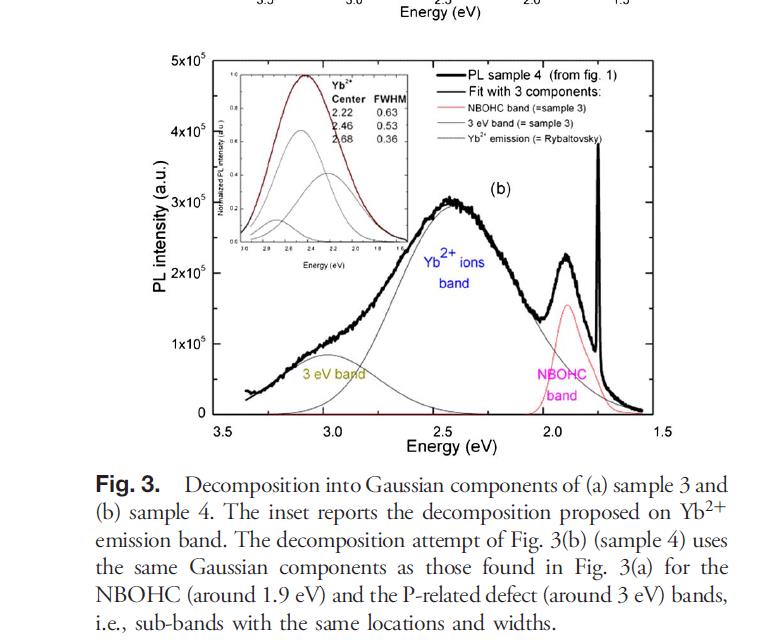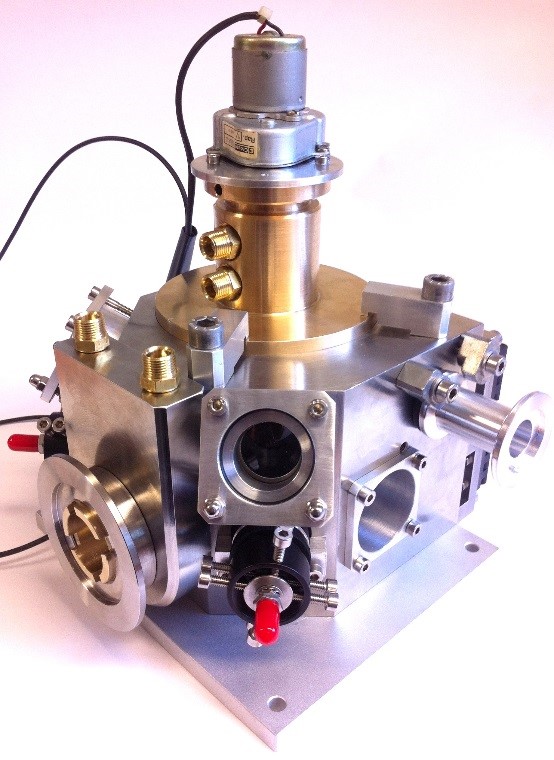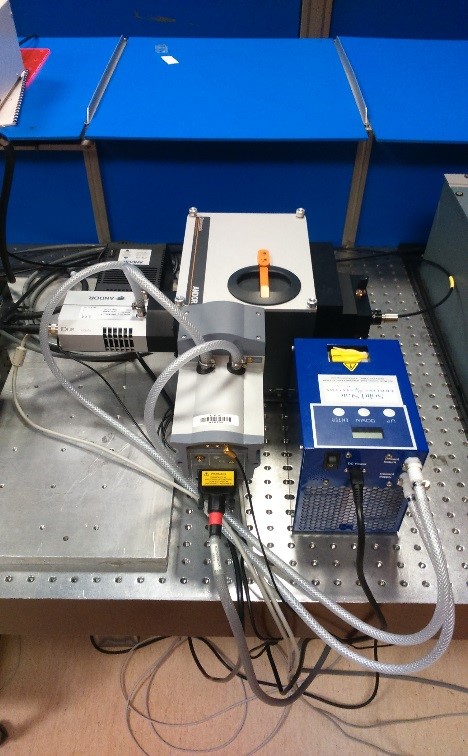In situ luminescence
In situ photoluminescence under electron irradiation
Aims:
We developed an in-situ photoluminescence experiment in order to study:
transient species created during irradiation (point defects...) and environment evolution of luminescent dopant element under irradiation
The experiment:
In-situ photoluminescence and cathodoluminescence measurements are performed thanks to a homemade set up (Figs 1-2). The 355 nm excitation or 532 nm one (Nd:YAG laser) is a 10 Hz pulse laser of 10 ns pulse duration. It is injected into a 14 m-long fiber connected to the irradiation cell (Fig.1).
The emission from the front face of the sample is collected at 45° (angle between the electron beam and collecting fiber) through a lens associated to a 14 m-long detection fiber. The 14 m fiber length is necessary to reach the spectrometer and ICCD camera (Fig 2) that are located in another room than the irradiation one in order to protect them against the gamma rays generated in the irradiation zone. Link.
|
Figure 1 |
Figure 2 |
First application dedicated to the study of Sm-doped glasses (2007)
We obtained new significant results in the understanding of reduction process of rare earth element under irradiation [1]. We showed that reduction process of Sm3+ into Sm2+ was not a direct process and evidence the presence of some intermediate transient species. Indeed, after the cut off the electron beam, a relaxation of the Sm3+ and Sm2+ emission signal was evidenced.
[1] N. Ollier, B. Boizot, P. L'henoret, S. Guillous, G. Petite. Evidence of transient species occuring in the reduction process of trivalent lanthanides under 2.5 MeV electron irradiation by in situ cathodoluminescence and time-resolved photoluminescence. J. Appl. Phys. 105 (2009) 113515.
A more recent work deals with the photodarkening of Yb-doped laser fiber. We detected by in situ photoluminescence measurements the green emission of divalent Yb2+ under the 355 nm excitation (Fig. 3). Moreover, we showed the existence of two types of Yb2+ ion species with different stabilities. We demonstrated that the radiodarkening mechanism is based on a pair association of Yb2+ with aluminium oxygen hole center point defects.
 |
[2] N. Ollier, C. Corbel, O. Cavani, T. Deschamps, J-B. Duchez, M. Bensalem, F. Mady In situ observation of the Yb2+ emission in the radiodarkening process of Yb-doped optical preform Opt. Letters 41 025 (2016)
Contact: Nadège Ollier (Nous contacter)




